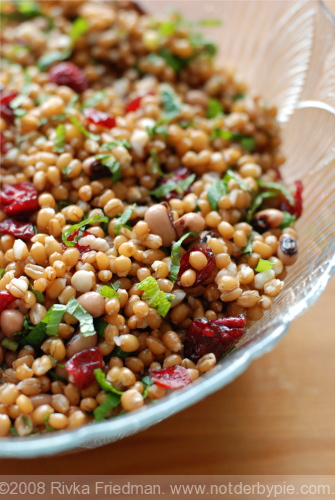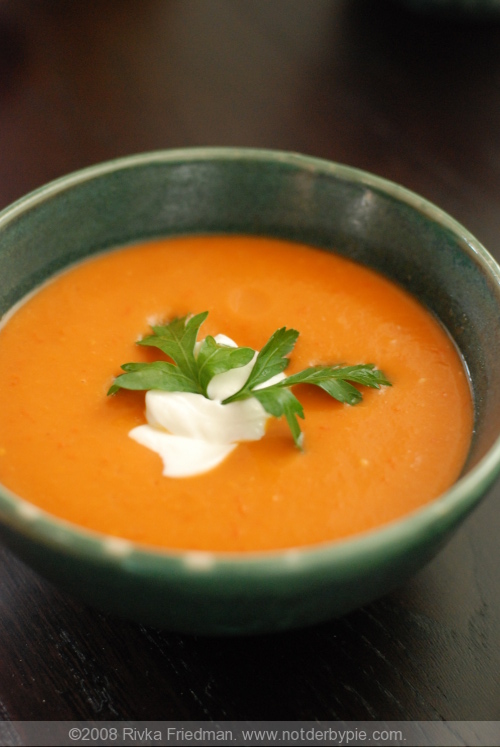 Please welcome my friend Jeremy, who was bold enough to suggest guest-posting on my blog and kind enough to follow through. He brought over a jar of this gazpacho and when I dunked a spoon in for a taste, I ended up finishing half the jar. It's the perfect summer soup, and I'm thrilled to be featuring it on NDP.
Please welcome my friend Jeremy, who was bold enough to suggest guest-posting on my blog and kind enough to follow through. He brought over a jar of this gazpacho and when I dunked a spoon in for a taste, I ended up finishing half the jar. It's the perfect summer soup, and I'm thrilled to be featuring it on NDP.
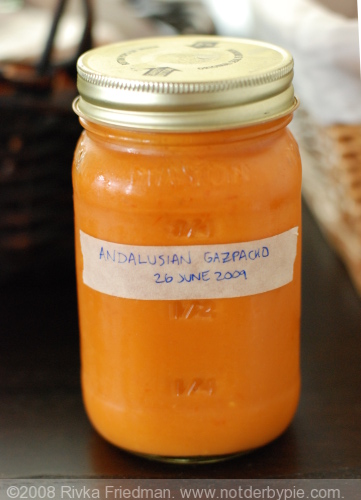
The height of summer means the height of tomato season, and in our house that means gazpacho season. Now, this means different things to different people. Some are partial to a soup that could easily be mistaken for salsa. Others are all about the cucumbers or the bell peppers. I've even heard people refer to a perfectly lovely watermelon soup as gazpacho, though I'd like to think any self-respecting Spaniard would scoff at this. For my money -- and we'll get to how it doesn't need to be a lot of money in a minute -- this easy-to-make gazpacho is the way to go. My spouse and I came upon the basis for this recipe (from Epicurious) some years ago, and over time we've adapted it and turned it into a staple of our summertime repertoire.
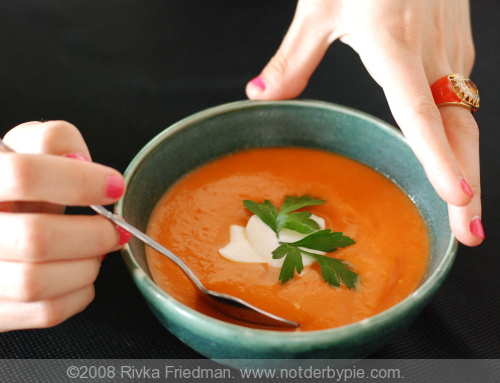
All in you're talking about 15 minutes of work for a gazpacho that puts the tomatoes right where they belong: front and center. It's substantial enough with a hunk of fresh baguette to make for a great mid-week meal just sitting at the coffee table. It's refined enough, topped with fresh chives, to lead off a small dinner party. And it's casual enough to serve spoonless in teacups or shot glasses for larger gatherings. It's just about a perfect summer soup, which is why we perpetually have a big jar of it in the fridge until tomatoes go out of season. And did I mention it'll keep for close to a week?
Andalusian Gazpacho
Ingredients 1 2-inch-long piece baguette 3 garlic cloves, or to taste 2 teaspoons salt 2 tablespoons Sherry vinegar, or to taste 1 teaspoon sugar 1/2 teaspoon ground cumin 2 1/2 pounds ripe tomatoes, cored and quartered 1/2 cup extra-virgin olive oil Garnish: whatever's around, but finely chopped (bell peppers, chives, cucumbers, parsley...)
Thoughts on Ingredients
Fresh baguette is probably best, but in the name of economy, we find this is the perfect place to use any stub that you might have leftover from lunch or shoved in the freezer for whatever reason.
For god's sake, please use fresh garlic. Don't try to substitute powder or any of that crap that comes in jars or wrapped in plastic. The early garlic, out now (or coming soon) to a farmers' market near you, is awesome.
Coarse kosher salt works great.
Don't try to substitute for the Sherry vinegar. We've tried, and the gazpacho doesn't quite pucker the same way without it. Sometimes labeled with the Spanish "vinagre de Jerez," Sherry vinegar can be hard to find at Safeway or Giant or the like, but Whole Foods usually has it. If not, and I hate how snobby this sounds, try Dean & Deluca or Fairway.
Use second tomatoes. You don't need gorgeous, perfect fruit when it's about to hit the bottom of a blender. At our local farmers' market, tomatoes go for $3.50-$4.00 per pound, but seconds are only $1.50, and if you choose wisely (firm with a blemish is fine, borderline rotten is not) finding enough for this recipe should be a cinch). As for variety, we're yet to find one that doesn't work, though I have to admit, I'm partial to the heirlooms later in the season.
Don't bother with a garnish unless it's fresh.
Directions:
Start by soaking the bread in a glass of water for a minute or two, then squeeze it dry and dump the water. The Gourmet recipe calls for trimming the crust, which I do. My spouse doesn't trim the crust, however, and frankly I can't taste much difference nor detect any real change in mouth-feel.
Gourmet tells you to mash garlic to a paste with salt using a mortar and pestle. We just crush the garlic with the side of our chef's knife and then chop it.
Blend the garlic, salt, baguette, vinegar, sugar, cumin, and half the tomatoes. We use a blender, because you're going to want to let the soup chill in a glass container, but a food processor works, too. Blend until the tomatoes are very finely chopped. Add the remaining tomatoes with motor running, and then ever so slowly, pour in the oil in a steady stream, blending until totally smooth. Don't rush -- taking your time with the oil is key to a velvety gazpacho
The garlic takes some time to come to the fore here, but when it does, it kicks, so resist the temptation to overdo. Refrigerate for a few hours, or until cold. Garnish and serve.
 Here's another round of my "weekday lunch" series, where I offer recipes that'll make your colleagues green with envy.
Here's another round of my "weekday lunch" series, where I offer recipes that'll make your colleagues green with envy.

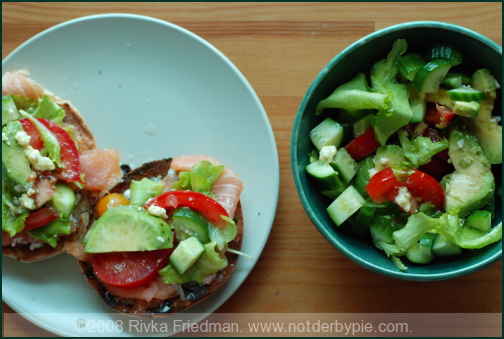
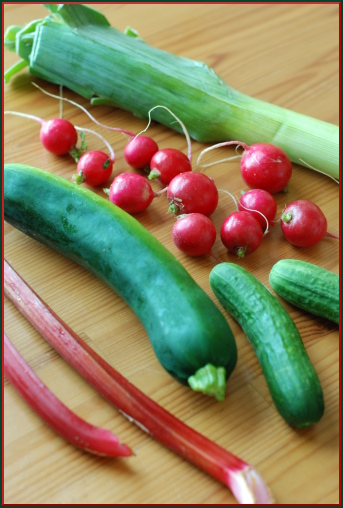
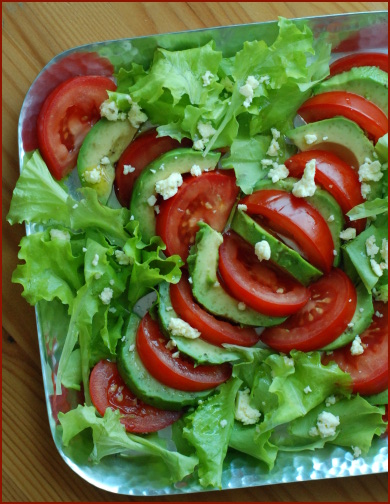
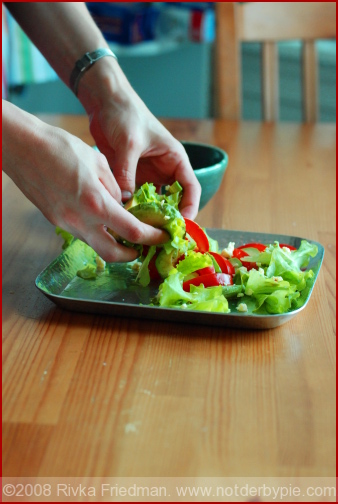
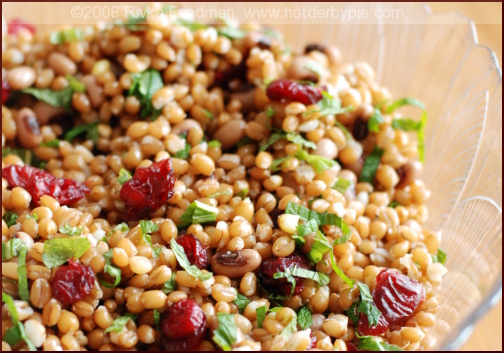 Yet another installment of my weekday lunch series; you can never have enough recipes for midday workplace eats.
Yet another installment of my weekday lunch series; you can never have enough recipes for midday workplace eats.